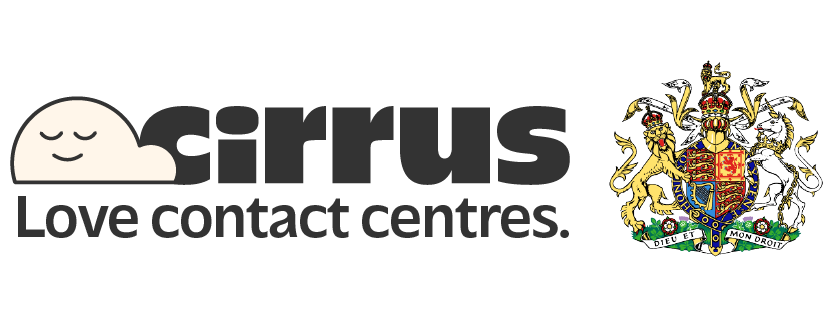What is average handle time (AHT)?
Average Handle Time (AHT) is a contact centre metric that measures the total duration of a customer interaction. It includes average talk time, average hold times, and wrap-up time, together forming the complete customer interaction. AHT is considered a key performance indicator for contact centres and plays a central role in evaluating centre efficiency, agent productivity, and the quality of service delivered.
This metric is beneficial for contact centre supervisors and performance analysts who need a reliable indicator of how long it takes to resolve different customer inquiries over a given time.
Why is average handle time important?
AHT affects both operational efficiency and the customer experience. A high AHT may suggest complex issues, knowledge gaps, or excessive tasks slowing down the interaction. A very low AHT might indicate rushed conversations or incomplete resolution, which can lead to follow-up tasks, customer dissatisfaction, or even customer churn.
Tracking AHT helps centre managers:
- Monitor agent performance
- Reduce centre costs through improved handling times
- Identify routine tasks vs. complex issues
- Optimise team schedules and manage agents for peak periods
- Improve customer retention rates by reducing wait times and delivering swift responses
How to calculate average handle time
The average handle time formula is simple but effective. You add the total talk time, hold time, and after-call work time, then divide that sum by the number of customer calls.
Formula:
(Talk Time + Hold Time + Wrap-Up Time) ÷ Total Calls = AHT
What’s a good average handling time?
There’s no universal “good” number for AHT. The ideal value depends on:
- Contact centre size
- Communication channels used
- Complexity of customer issues
- Industry norms and customer expectations
For routine inquiries like billing questions, AHT might range between 4–6 minutes. Longer durations may be necessary for intricate customer issues in sectors like financial services to provide a complete resolution.
The goal is to find a sweet spot, a balance between speed and thoroughness, that supports consistent CSAT (Customer Satisfaction Scores) and long-term loyalty.
Limitations of the AHT formula
While useful, the AHT metric has limitations. A narrow focus on shortening handle times can result in:
- Rushed interactions
- Frustrated customers
- Poor first-call resolution rates
- Unresolved issues requiring follow-up calls
It’s important to consider broader contact centre KPIs, including:
- Customer feedback and grievances
- Customer satisfaction scores
- Centre turnover rate
- Agent experience and coaching needs
- Contact centre performance trends
Managers should treat AHT as one key indicator among many in a well-rounded contact centre performance management strategy.
Eight ways to reduce average handle time
Improving AHT should never come at the cost of service quality. Instead, smart adjustments in processes, tools, and training can reduce unnecessary delays. Here’s how:
1. Train agents regularly
Effective agent training ensures staff are equipped to handle common questions and know how to resolve them efficiently. Use agent coaching sessions based on AHT data and contact centre analytics to address performance gaps.
2. Strengthen internal knowledge bases
Quick access to an internal knowledge base helps reduce wrap-up time and provides instant insights for faster resolutions. It also safeguards against knowledge gaps in newer or less experienced agents.
3. Use intelligent routing systems
Smart routing connects customers to the most qualified agents for the job. This minimises unnecessary delays and shortens average handle time by avoiding call transfers.
Consider tools with omni-channel support that route calls, chats, and emails efficiently across teams.
4. Support self-service options
Self-service portals can manage routine inquiries, reducing the volume of interactions reaching agents. This leaves more time for the complete resolution of more complex issues.
Ensure your solution offers accessibility features to make self-service tools user-friendly for all customers.
5. Automate wrap-up work
Automating after-call tasks like ticket creation, tagging, and customer follow-ups can save time and reduce agent fatigue. Tools with CRM integration help streamline this process.
6. Analyse call patterns
Segment customer calls by issue type, urgency, and complexity. Doing so lets you identify caller segmentation trends and optimise scripts or escalation rules.
Leverage AI-powered Contact centre solutions for real-time suggestions that guide agents through each conversation.
7. Promote active listening
Active listening is one of the most critical factors for reducing repeat contacts and ensuring faster customer responses. Encourage agents to confirm understanding before offering a solution.
8. Foster collaboration and communication
Improved internal communication helps teams quickly consult subject matter experts. Collaboration tools and Microsoft Teams integration make it easier for agents to access help in real time.
Strike a balance between efficiency and quality
One of the most delicate balances in the customer service industry is between speed and satisfaction. A low AHT may look good on paper, but it can hurt customer loyalty if it results in poor experiences.
Modern contact centres focus on:
- Monitoring team performance through performance metrics and customer service KPIs
- Avoiding sidelined customer issues by ensuring clarity and closure
- Training agents on how to manage volatile callers or angry customers
- Keeping an eye on labour costs without reducing service value
- Using contact centre software to manage and improve centre operations
The role of AHT in contact centre performance
In busy contact centres, Average Handle Time (AHT) gives you a good snapshot of how things are running each day. It helps spot what’s slowing things down and shows where agents might need extra support or training.
Integrated systems, such as cloud-based contact centres, can display average handle time data across multiple communication channels for better contact centre performance management.
With this information, managers can make smarter decisions about hiring, staff shifts, and training. It also helps teams stick to company standards while still giving each customer a personalised, helpful experience.
Frequently asked questions
What is the average handle time in a contact centre?
It’s the average time it takes to complete a single customer call, including talk time, hold time, and after-call work.
How is AHT calculated?
By adding total talk, hold, and wrap-up time, then dividing by the number of customer interactions during a specific time period.
What is considered a good AHT?
It varies by industry, complexity of issues, and contact centre metric priorities. The ideal AHT balances speed and resolution quality.
Can AHT affect customer satisfaction?
Yes. AHT directly impacts customer experience. If handled well, it supports faster service and long-term loyalty. If mismanaged, it may lead to negative impacts and customer drop-offs.
How does training improve AHT?
By addressing insufficient agent training and helping agents handle interactions with faster resolutions, better tools, and smoother delivery.
Final thoughts
Average Handle Time (AHT) is still one of the most important call centre metrics. It gives you valuable insights into how well your team is working. But it’s not just about making calls shorter, it’s about helping your agents do their jobs well, supporting your customers, and showing that your brand cares about good service.
To explore improving AHT through automation, analytics, and better planning, consider solutions like workforce optimisation or request a demo to discover what’s possible.
Your Contact Centre, Your Way
This is about you. Your customers, your team, and the service you want to deliver. If you’re ready to take your contact centre from good to extraordinary, get in touch today.


